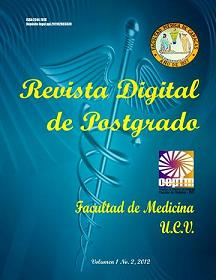ANEMIA APLÁSICA Y EMBARAZO
Keywords:
Anemia Aplásica, Embarazo, AdolescenteAbstract
Objetivo: Aunque rara vez se encuentra durante el embarazo, la anemia aplásica (AA) es una complicación grave que aumenta el riesgo de infección y hemorragia, aumentando la morbi-mortalidad materna; por tal motivo, se propone reportar un caso clínico de AA y embarazo. Caso Clínico: Se reporta el caso de una adolescente de 16 años, primigesta, con gestación intrauterina de 15 semanas por biometría fetal y diagnóstico de AA desdehace tres meses, tratada con ciclosporina A y prednisona; la cual ingresa por pancitopenia y cifras tensionales elevadas; conllevando a la decisión de interrumpir el embarazo debido al progresivo deterioro de la salud materna. Conclusión: Si bien la anemia en una de las principales complicaciones durante la gestación, la asociación de AA y embarazo es infrecuente.
Downloads
References
REFERENCIAS
Candio F, Hofmeyr GJ. Tratamientos para la anemia ferropénica en el embarazo: Comentario de la BSR. La Biblioteca de Salud Reproductiva de la OMS. 2007; Ginebra:
Organización Mundial de la Salud.
Gurion R, Gafter-Gvili A, Paul M, Vidal L, Ben-Bassat I, Yeshurun M, Shpilberg O, Raanani P. Hematopoietic growth factors in aplastic anemia patients treated with
immunosuppressive therapy systematic review and meta-analysis. Haematol. 2009; 94(5):712-719.
Issaragrisil S, Kaufman DW, Anderson T, Chansung K, Leaverton PE, et. al. The epidemiology of aplastic anemia in Thailand. Blood. 2006;107 (4):1299-1307.
Álvarez LC, Barros J, Ladrón de Guevara M. Anemia aplástica y embarazo. Salud
Uninorte. 2007; 23 (1): 120-126
Tichelli A, Socié G, Marsh J, Barge R, Frickhofen N, McCann S, et al. Outcome
of pregnancy and disease course among Women with aplastic anemia treated with
immunosuppression. Ann Intern Med. 2002;137 (3):164-172.
Cartagena E, Zelaya A, Gutiérrez GA, Castro GM, Barahona K, Díaz F, et al. Reporte de un caso: Anemia Aplásica en el embarazo. Rev Fac Cien Méd. 2004; (1): 55-59.
Machín S, Svarch E, Dorticós E. Aplasia Medular. Actualización. Rev Cubana Hematol
Inmunol Hemoter. 1999; 15 (2):79-90
Scheinberg P, Wu CO, Núñez O, Young NS. Long-Term Outcome of Pediatric Patients with Severe Aplastic Anemia Treated with Antithymocyte Globulin and Cyclosporine. J Pediatr. 2008;153 (6):814-9
Montané E, Ibáñez L, Vidal X, Ballarin E, Puig R, García N, Laporte JR, Catalan Group for the Study of Agranulocytosis and Aplastic Anemia. Epidemiology of aplastic anemia: a prospective multicenter study. Haematol. 2008 Apr; 93(4):518-523.
Young NS, Calado RT, Scheinberg P. Current concepts in the pathophysiology and
treatment of aplastic anemia. Blood. 2006; 108 (8):2509-2519.
Ruiz HF. Anemia Aplásica. México: Universidad Juárez del Estado de Durango. 2009.
Centers for Diseases Control. Recommendations to prevent and control iron deficiency in the United States. MMWR. 1998; 47 (RR - 3): 1 – 29.
Bacigalupo A, Passweg J. Diagnosis and Treatment of Acquired Aplastic Anemia. Hematol Oncol Clin N Am. 2009; 23 (2) 159–170.
Young NS. Acquired Aplastic Anemia. Ann Intern Med. 2002; 136(7):534-546.
Guinan EC. Acquired Aplastic Anemia in Childhood. Hematol Oncol Clin North Am.
; 23(2):171-91.
Leong KW, Teh A, Bosco JJ, Lim J. Successful pregnancy following aplastic anaemia.
Postgrad Med Jr. 1995;71 (840):625-627
Socié G, Mary JY, Schrezenmeier H, Marsh J, Bacigalupo A, Locasciulli A, et al.
Granulocyte-stimulating factor and severe aplastic anemia: a survey by the European
Group for Blood and Marrow Transplantation (EBMT). Blood. 2007;109(7):2794-2796
Locasciulli A, Oneto R, Bacigalupo A, Socié G, Korthof E, Bekassy A, et al. Outcome
of patients with acquired aplastic anemia given first line bone marrow transplantation
or immunosuppressive treatment in the last decade: a report from the European Group
for Blood and Marrow Transplantation. Haematol. 2007; 92 (1):11-18.
Deeg HJ, Leisenring W, Storb R, Nims J, Flowers MED, Witherspoon RP, et. al. Long-
Term Outcome After Marrow Transplantation for Severe Aplastic Anemia. Blood. 1998; 91
(10): 3637-3645.
De Siqueira JE. Los orígenes del consentimiento informado en clínica. Rev Bioet Latinoam [Internet]. 2009 [Citado 2010 Oct 14]; 3 (3). Disponible en: http://www.saber.ula.ve/bitstream/123456789/27949/6/articulo3.pdf.
Uzcátegui O, Toro J. Consentimiento Informado. Rev Obstet Ginecol Venez. 2008;
(1): 1 - 4.
Downloads
How to Cite
Issue
Section
License
Usted es libre de:
- Compartir — copiar y redistribuir el material en cualquier medio o formato
- Adaptar — remezclar, transformar y construir a partir del material
- para cualquier propósito, incluso comercialmente.
Bajo los siguientes términos:
-
Atribución — Usted debe dar crédito de manera adecuada, brindar un enlace a la licencia, e indicar si se han realizado cambios. Puede hacerlo en cualquier forma razonable, pero no de forma tal que sugiera que usted o su uso tienen el apoyo de la licenciante.
- No hay restricciones adicionales — No puede aplicar términos legales ni medidas tecnológicas que restrinjan legalmente a otras a hacer cualquier uso permitido por la licencia.











